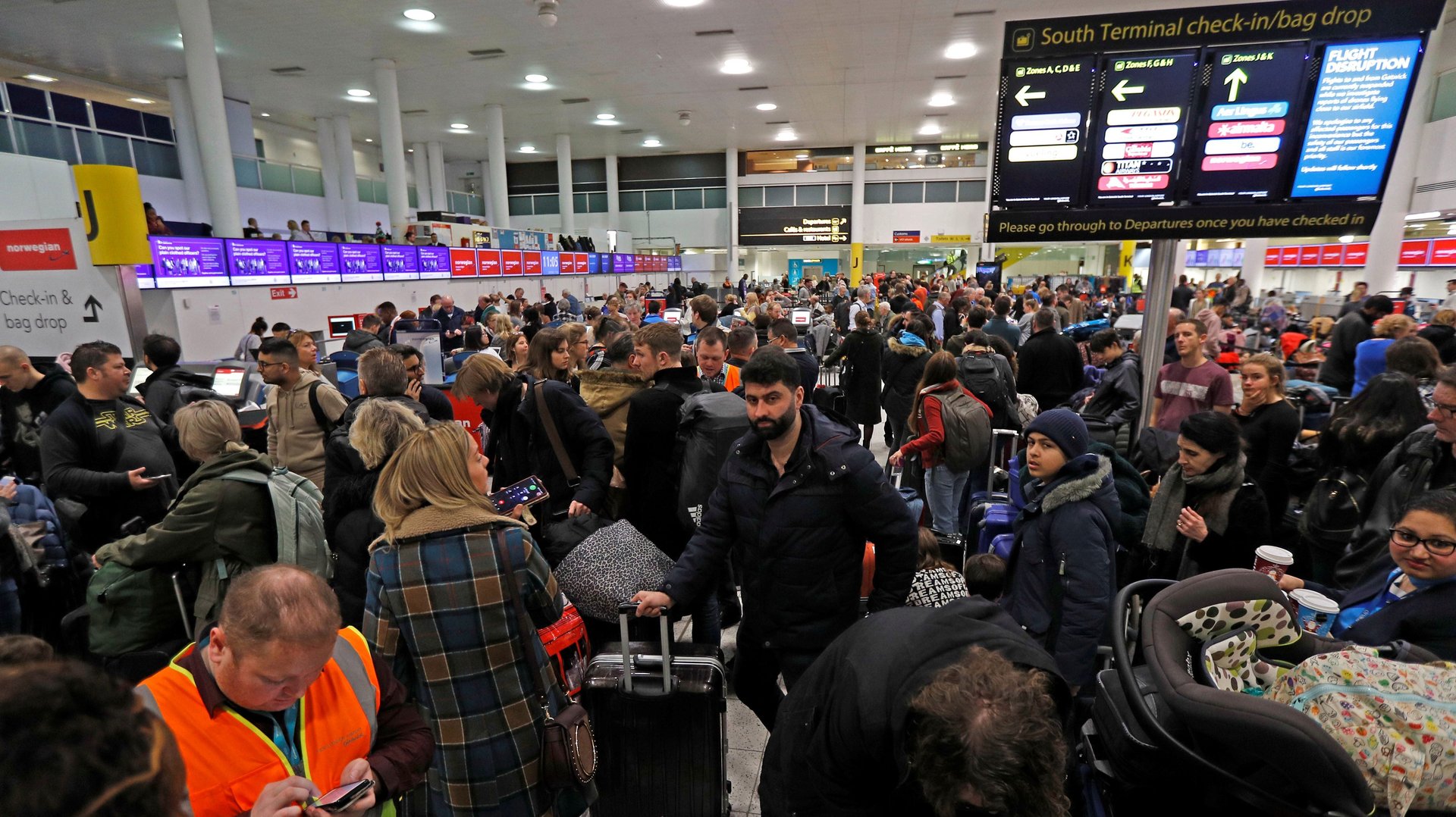The Army has been called in to deal with drone-related chaos at London’s Gatwick Airport
It’s been a day of chaos—with no finish line in sight. A series of drone sightings near London’s Gatwick Airport grounded nearly 100,000 passengers, with dozens of flights rerouted to airports around Europe.


It’s been a day of chaos—with no finish line in sight. A series of drone sightings near London’s Gatwick Airport grounded nearly 100,000 passengers, with dozens of flights rerouted to airports around Europe.
The drama intensified this evening (Dec. 20), as the British Army was called in to deploy so-called “specialist equipment,” to deal with the drones—though there has been no confirmation of plans to shoot them down. This is the second night the airport has been closed after the drones were first spotted last night (Dec. 19).
Police said they were wading into “new territory” with the drone activity, and had not been in such a situation before. Previous contingency plans had been brought to their limit, police spokesperson Jason Tingley told the BBC. “We are doing our very best in terms of that capability and those tactical options to deal with this issue and effectively mitigate the threat that drone may pose whilst in the air.”
Though the sightings are not being treated as acts of terror, there are reports that the drone sightings may be the work of environmental protesters, trying to wreak havoc to make a point. According to the British Telegraph, police are investigating the possibility of a “lone wolf” eco-terrorist, while it’s been posited that an apparently “sophisticated” plan of attack is the work of a well-coordinated group. Stewart Wingate, the airport’s chief executive, described the events as “a highly targeted activity which has been designed to close the airport and bring maximum disruption in the run up to Christmas.”
In the meantime, British prime minister Theresa May said her government would consider new legislation to curb drones around airports.
It’s very unusual for drones and planes to collide, though when they do, it’s not great news for anyone involved. In test conditions, drones have caused serious damage to planes. University of Dayton scientists flew a 2.1lb (1kg) DJI Phantom 4 drone into the wing of an airplane, traveling at 238 miles per hour. In the blink of an eye—three-hundredths of a second—the drone had smashed into the plane’s wing, “like a spoon through chocolate mousse.” If it had gone soaring into the front windscreen, or even into the engine, it would have done still more damage.
Increasingly, criminals have used drones to bolster their efforts, leaving British police forced to divert resources to “new forensic intelligence forces” dedicated to tackling drone-related crimes. How quickly they can find the culprits here remains to be seen—though, almost a whole day on, thousands of passengers are waiting with baited breath.